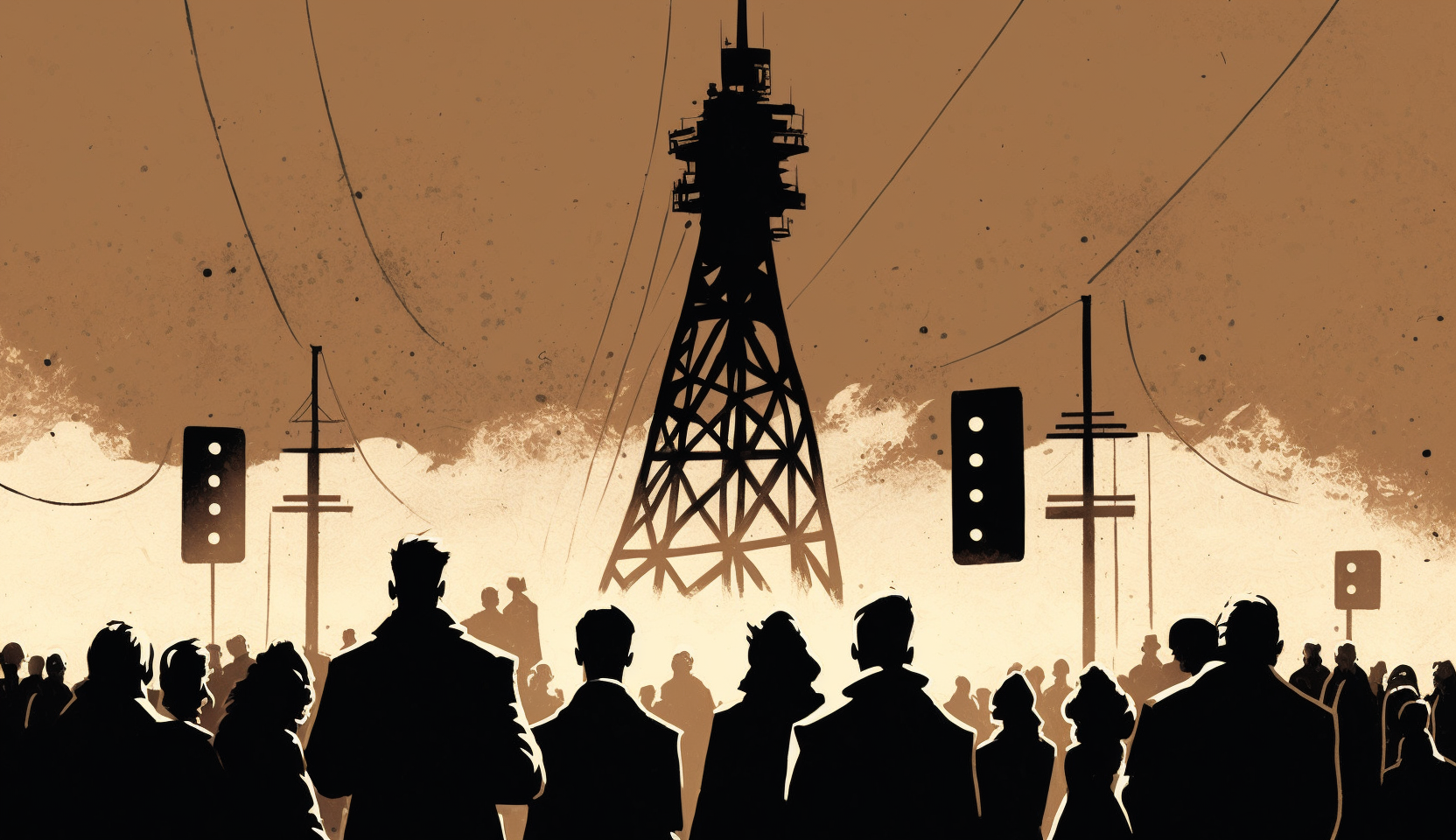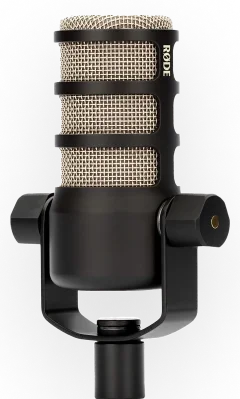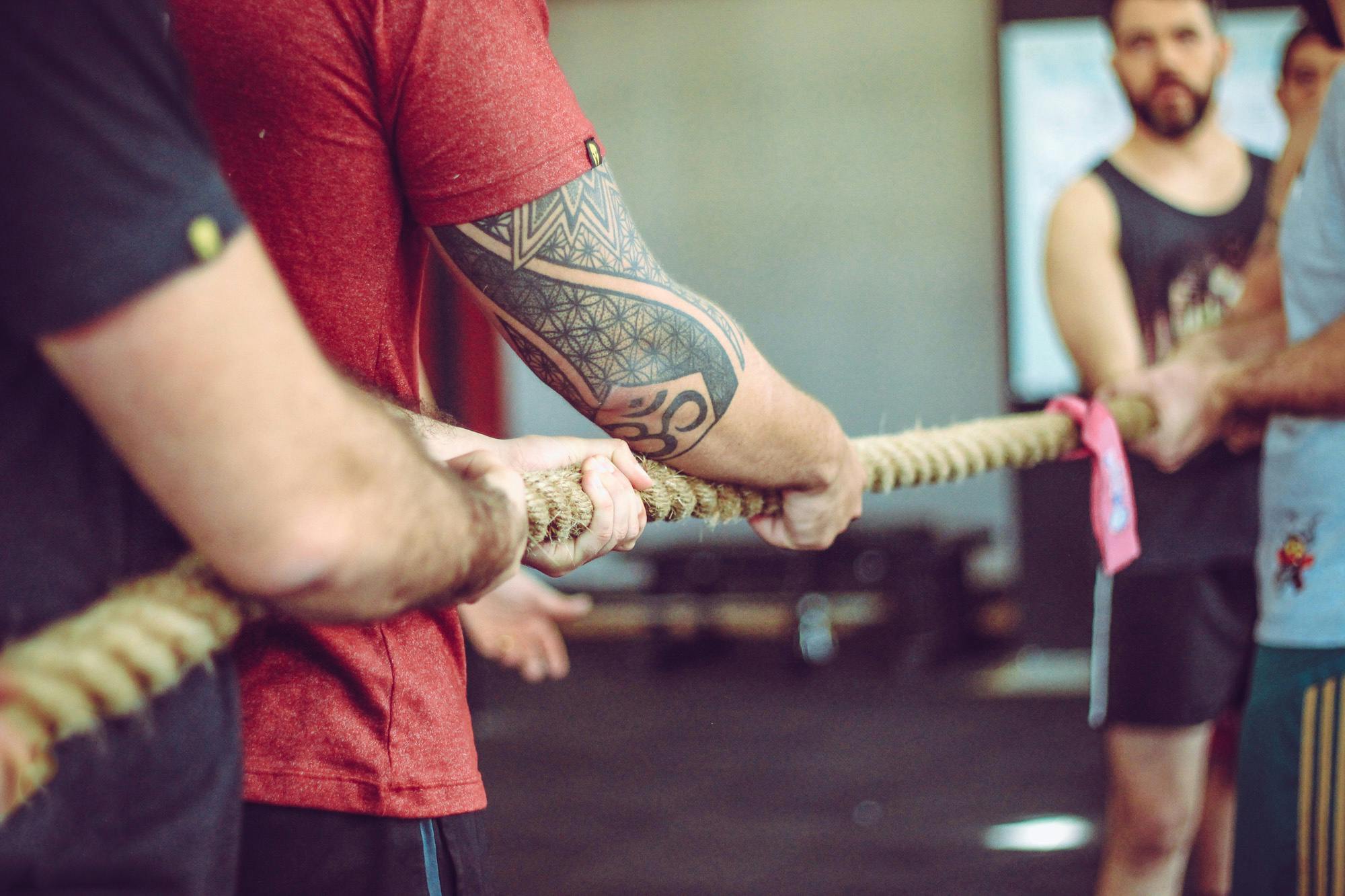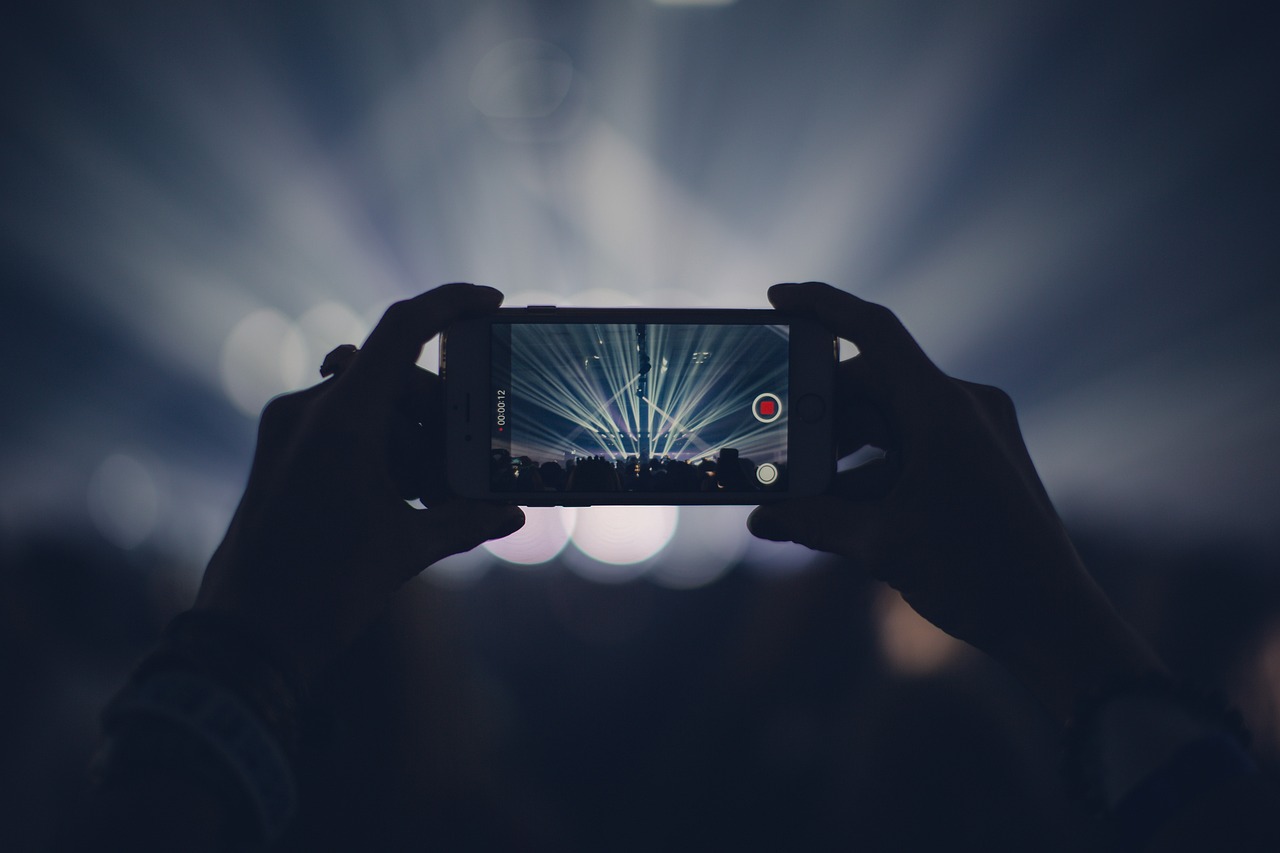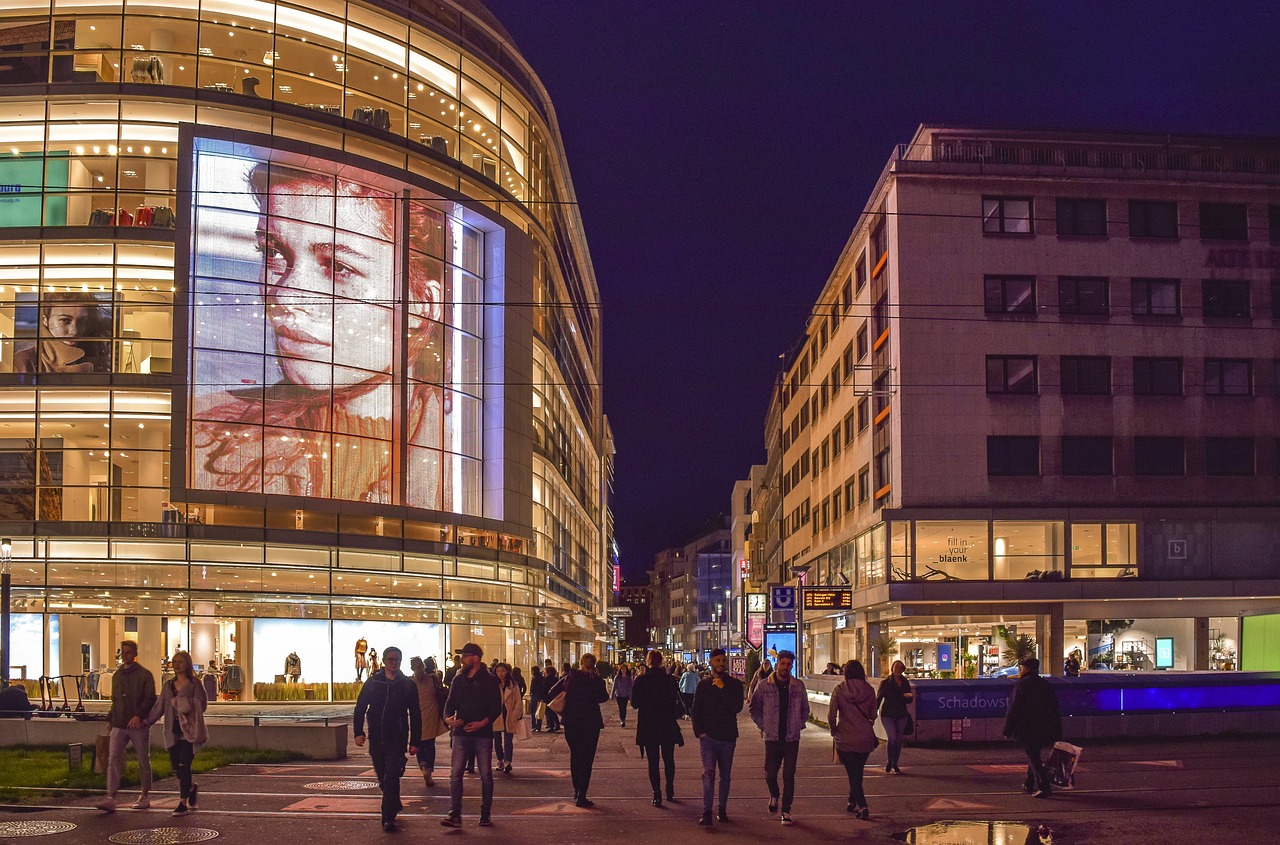This week on the Deepdive: Libsyn President and CPO John Gibbons shares Libsyn’s vision for the next generation of podcasters. With tools like Libsyn Studio and Connect, Libsyn aims to simplify the production process so podcasters can focus on what matters: the podcast. Tune in to learn more!
Let’s say you are a new brand on the market with an upcoming line of, I dunno, wines and cheap perfumes. Your target: small-town girls, and the city boys who love them. What is the optimal way to build awareness for your brand and potentially even drive sales? Well, have I got a customer journey for you.
Last week, Sounds Profitable debuted our latest research study, The Medium Moves the Message. There were some jaw-dropping highlights to this study – I am not sure I’ve ever written a better headline for a slide than “Podcasting’s Heavy Users are a Generation Younger than Heavy Users of Radio and TV.” It is true that the audiences for commercial AM/FM radio and linear TV are getting older, while podcasting continues to surge 18-34 (and, let’s be frank, underperform 55+). But there is another way to look at this data that truly highlights the strength of audio, period.
I’m currently in Prague at one of my favorite conferences, Radiodays Europe, which I’ve attended and spoken at for many years. It’s always a fantastic event, especially for someone who just loves audio in all its forms as I do. Radio in Europe is not without its challenges (I mean, we all have them) but it’s also successful, forward-looking, and vibrant. Podcasting has increased in prominence year after year at Radiodays and now occupies its own summit on the first day as well as numerous sessions scattered throughout the event.
Still, many European broadcasters have been a bit slow to embrace podcasting, and in fairness, I can understand why. Radio is doing pretty well here – the markets aren’t “over-radioed” like their American counterparts, there is continual investment in technology and content, and European stations haven’t ruined radio with too many ads. Podcasting is just a tiny fraction of that market, so a disparity in the investment of time and treasure makes sense.
Here’s why podcasting – especially here in Europe, but to no less a degree in the US – should be getting a stronger push from radio broadcasters. In our brand research for The Medium Moves the Message, we looked at the top five advertisers by share of voice in broadcast radio, linear TV, and podcasting, and asked a series of basic brand health questions about all of them to a sample of over 2,000 Americans 18+.
By looking at such a broad sample, we were able to isolate segments of persons who were weekly consumers of each medium, and those who were not, and record the differential in response to key brand measures between each medium’s best “customers” and those who don’t regularly listen to or watch these channels. For example, in TV we looked at the five leading advertisers by share of voice (Domino’s, Progressive, GEICO, Subway, and Liberty Mutual) and compared how heavy users of TV felt about these brands with the feelings of people who don’t regularly watch TV. The results were completely fascinating.
For each brand, we measured four key brand health indicators: awareness, favorability, consideration (how likely are you to consider researching/learning more/purchasing the brand), and taking action (did you buy or take some meaningful action step towards purchase). For the five TV brands, we saw very similar results to what you see on this slide for Progressive:
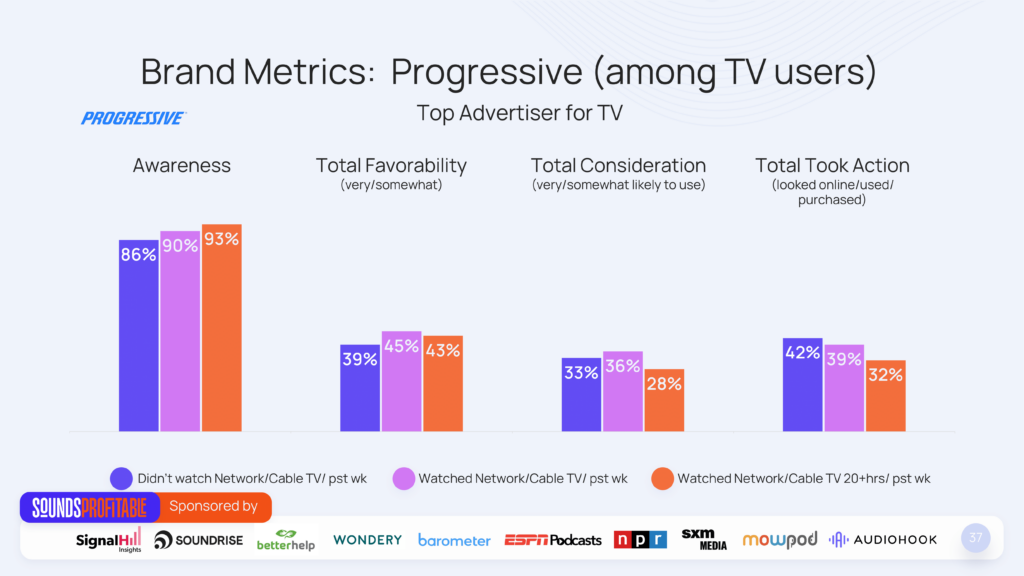
This is actually a fairly typical pattern for the large insurance companies here in the US, who are heavy advertisers across multiple platforms (including podcasting.) There is a clear difference in awareness between heavy users of TV, and non-regular viewers (the left side of the graph) but as you go towards the right side of the graph to lower funnel measures like consideration and action, you actually see a bit of a backlash – if you watch more than 20 hours of TV each week, you see a lot of Flo, the Gecko, and the Emu.
Still, the increases in awareness are not insignificant, especially when you consider both the numerator (the increase in awareness) AND the denominator, the size of TV’s weekly reach, which continues to be large and roughly double the weekly reach of podcasting.
The five radio brands showed similar results when we compared heavy listeners to radio with persons who listen less than weekly (or never) – there are definite increases in awareness, but as you go deeper into the funnel the picture gets a bit muddier. Some brands win, some will lose. Some are born to sing the blues.
This, my friends, is where podcasting shines. Certainly, you would expect to see all of these measures increase when you look at the report card for a brand that has been heavily invested in podcasting, like BetterHelp, where not only consideration and action are positively impacted, but awareness as well:
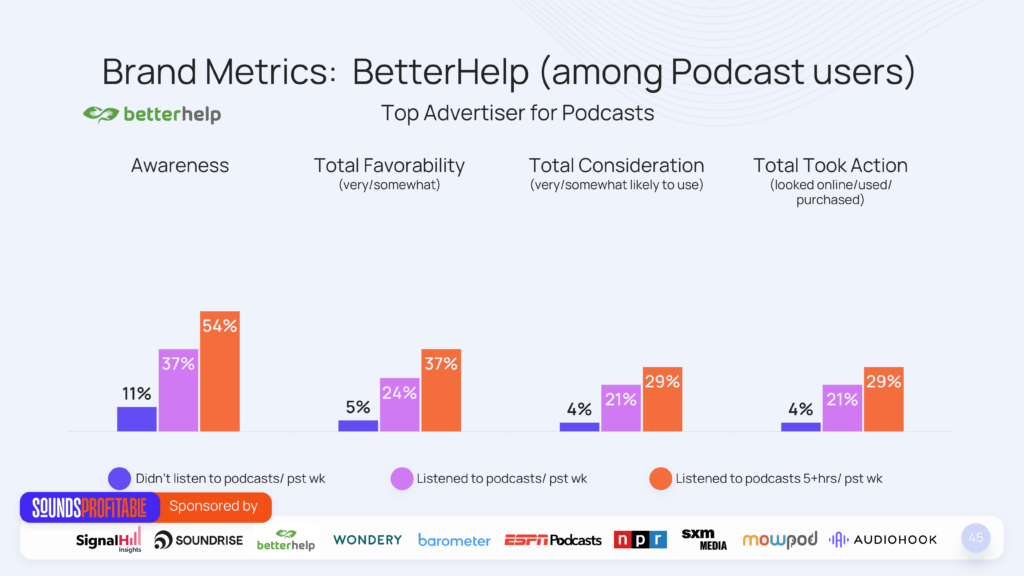
The most fascinating data, however, were the various measures of brand health for those omni-channel saturators in the insurance industry like Progressive and GEICO. Certainly, when you look at both the percentages for awareness and the larger reach of radio, it performs well for awareness, but podcasting’s audience is actually more positive for lower funnel measures, even with these ubiquitous brands (and even with the fact that these brands often reuse the same audio creative).
Look at this comparison of consideration (the percentage who say they are “very or somewhat likely” to use the brand) across the exclusive weekly audiences for TV, radio, and podcasting:
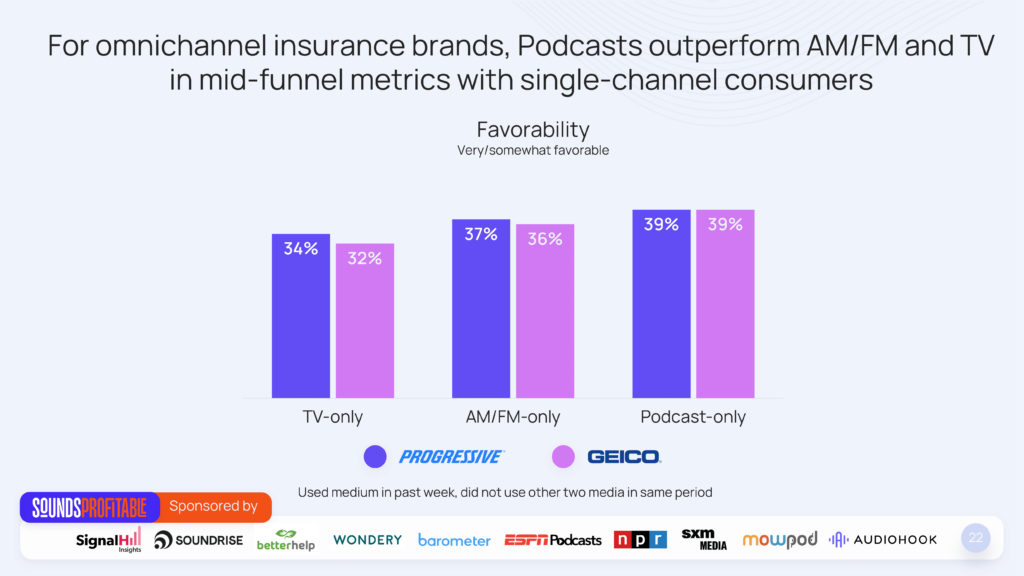
Even with these brands, who carpet bomb every channel, all the time, podcasting’s audience is higher in consideration, favorability, and taking action. In fact, if you look at a summary of the averages for the top five brands in each channel, you can see that radio performs very well for awareness (especially when you consider that the radio brands are also heavily present in other channels) while podcasting just kills it on taking action:
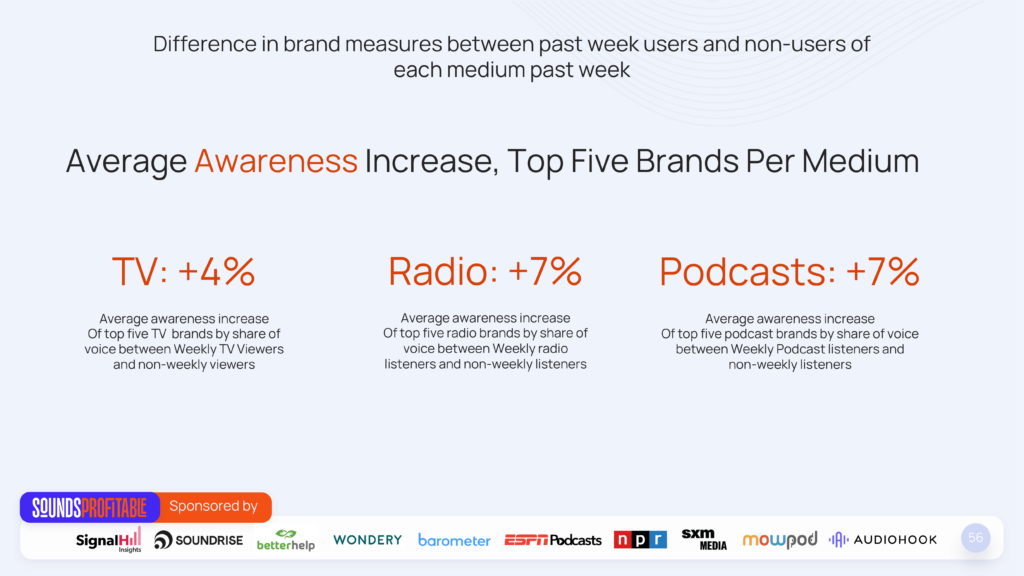
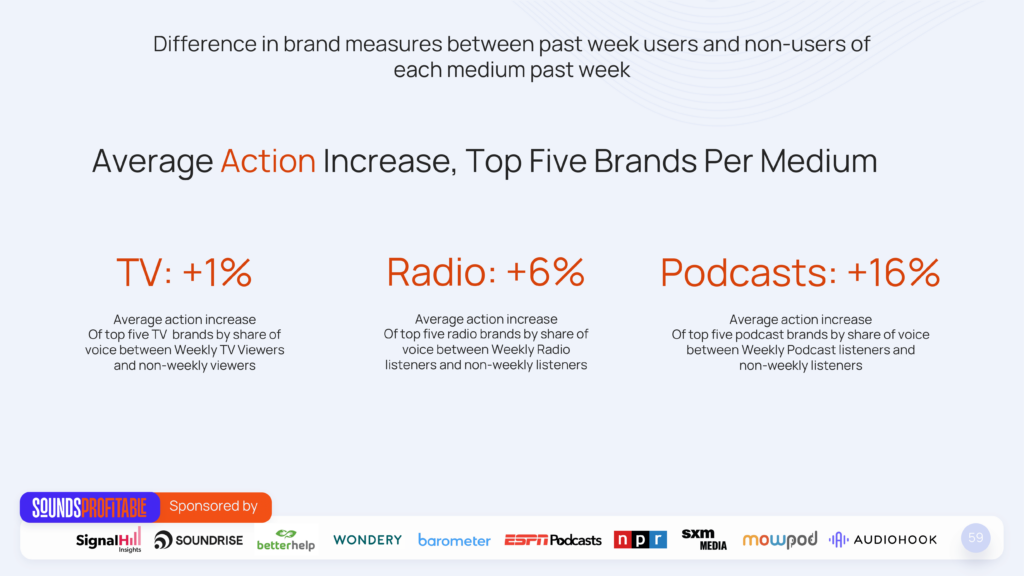
And here we come to the whole point – why radio broadcasters should embrace podcasting. If you are in podcasting, this data definitely supports a view that advertisers should be buying podcasts to obtain measurable lift in lower funnel measures. But if you are also in radio, then you can have your cake and eat it too: you can present a combined sell to advertisers that isn’t just a podcasting value-add thrown in to a radio buy, but a sequenced part of a total audio solution that starts with building reach on radio, and then moves a listener meaningfully along a customer journey towards a deeper relationship with a brand through podcast advertising.
It’s a true total-funnel solution, and not one that cannibalizes existing broadcast properties. If you can talk intelligently about the differential impact of radio and podcasting at different parts of the funnel, and tell the story of how audio can accompany the listener at every stage from awareness to consideration to signing on the line that is dotted, who can beat that? Not display, not YouTube’s five-second-and-skip ads, and not streaming TV. They’re just strangers, paying anything to roll the dice just one more time.
Podcasting may seem to be competing for resources with radio, but they are actually incredibly complementary, and the data from The Medium Moves the Message is one of the first credible studies that clearly spells this out.
I hope you download and use this study. Sounds Profitable is very grateful to Signal Hill, our research partners in this effort, and to our fine sponsors for helping us bring this project to the entire industry: Wondery, Audiohook, Soundrise, BetterHelp, SXM, Barometer, ESPN Podcasts, NPR, and Mowpod.
New Partners
Sounds Profitable exists thanks to the continued support of our amazing partners. Monthly consulting, free tickets to our quarterly events, partner-only webinars, and access to our 500+ person slack channel are all benefits of partnering Sounds Profitable.
- Get spoon-fed side hustles + billion-dollar business ideas you can pounce on from My First Million podcast.
- Narrativ automatically generates audio versions of news articles and monetizes via audio ads. Today, their partners are primarly college institutions. Check out Narrativ at The Harvard Crimson or the Targum!
Want to learn more about partnership? Hit reply or send us an email!

